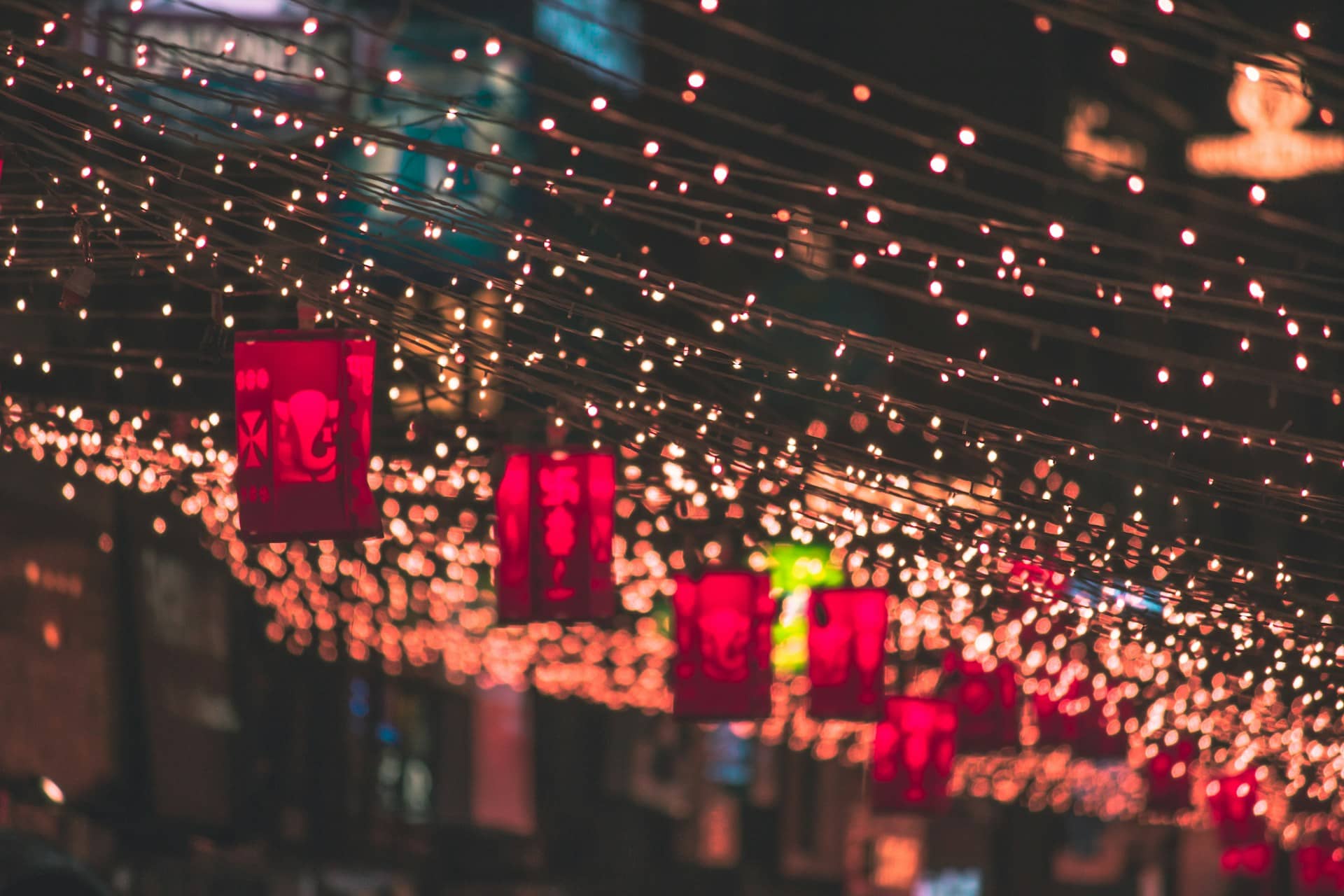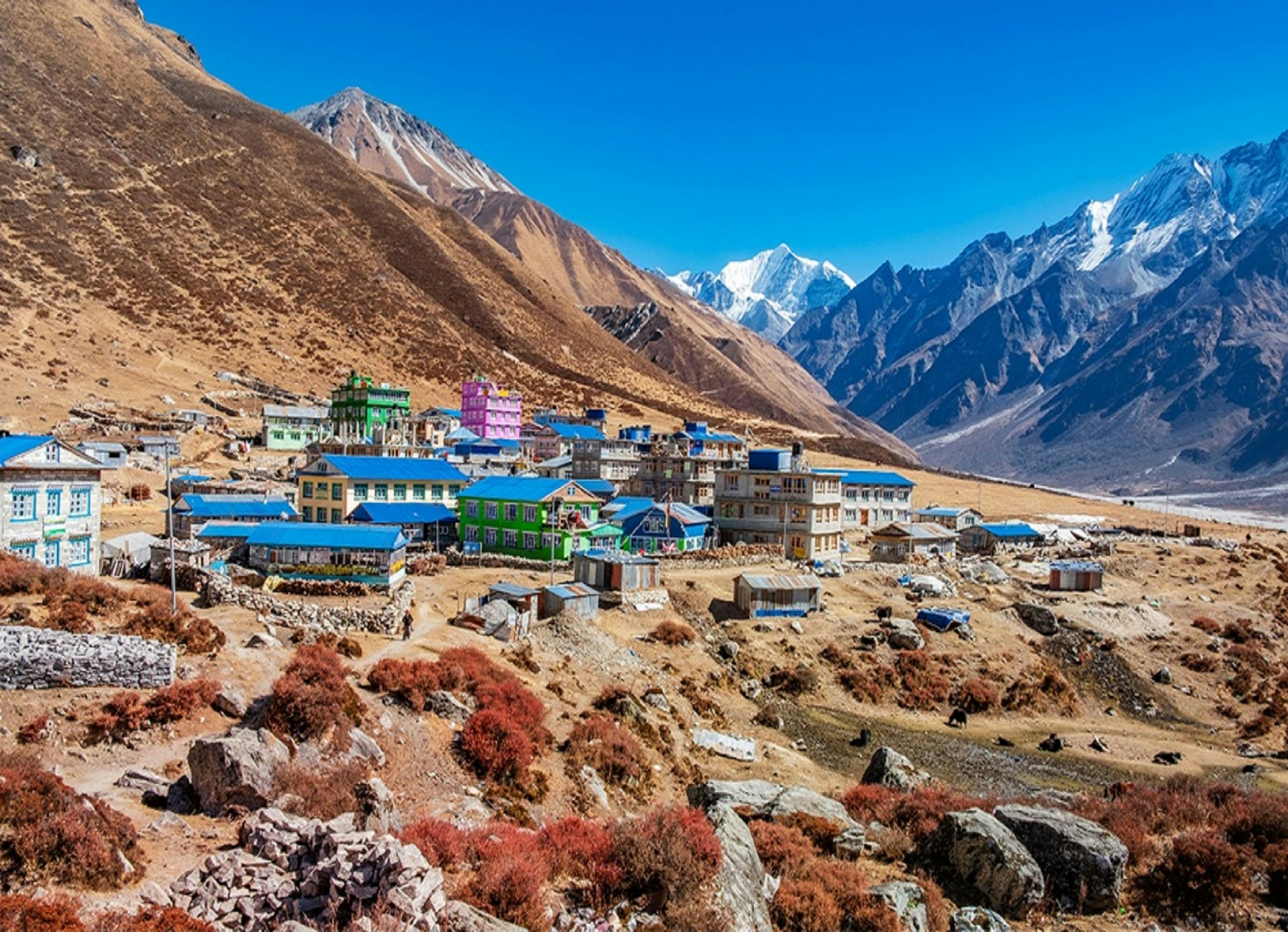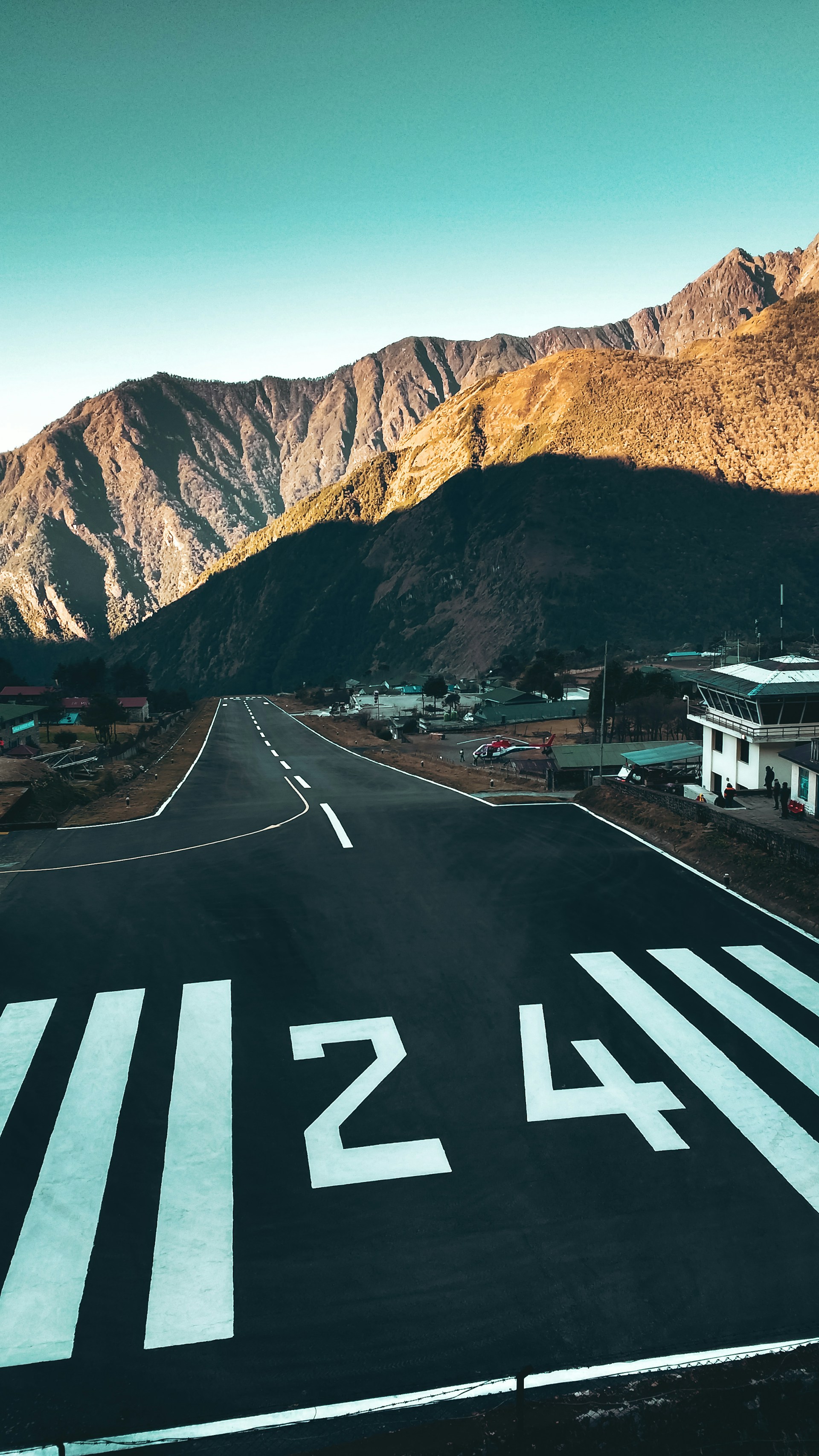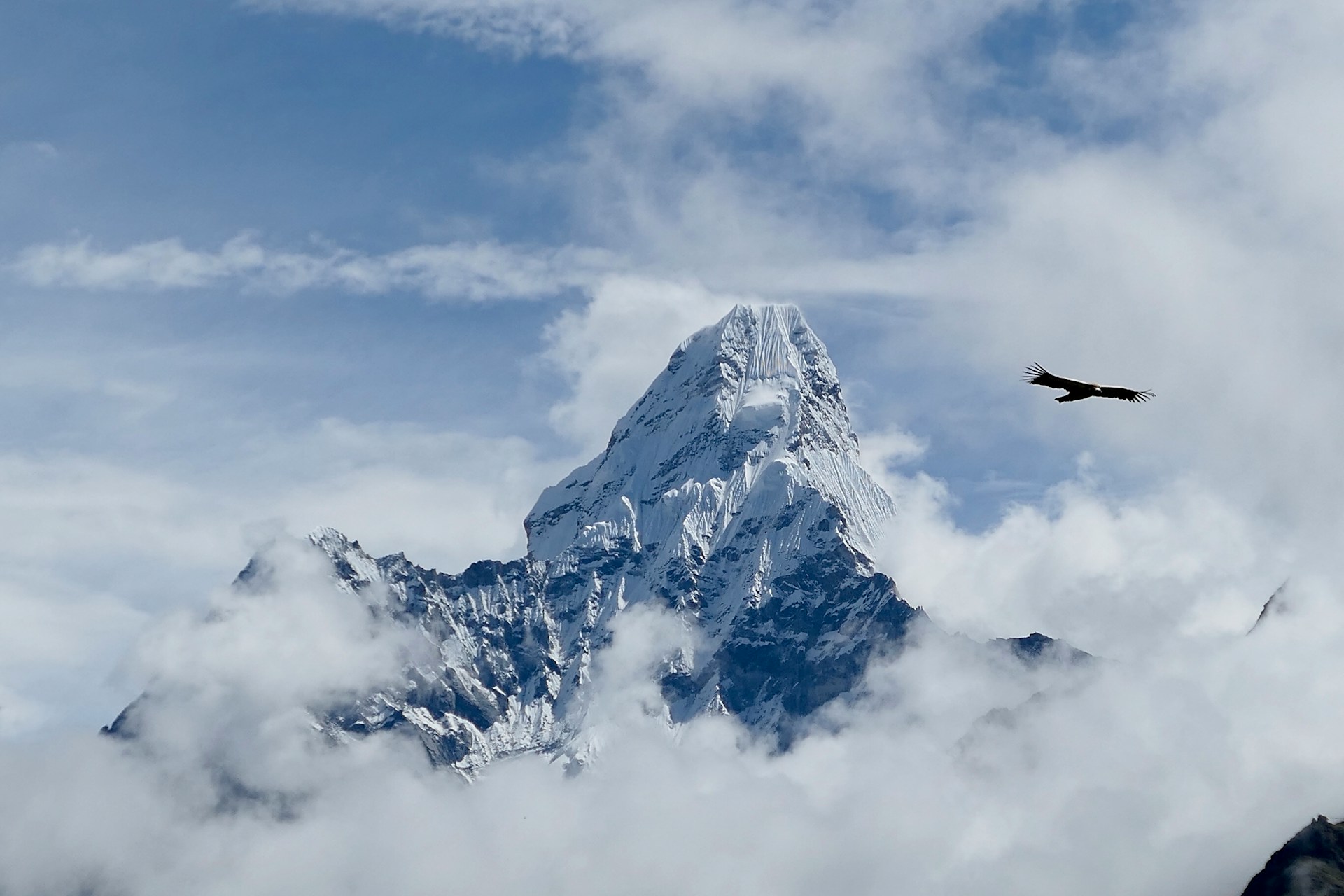Tihar Festival, also known as Deepawali, Swanti, or Yamapanchak, is a vibrant five-day celebration of lights that honors animals, light, people, and kinship. One of the most cherished festivals in Nepal, Tihar is deeply rooted in the rich cultural and spiritual traditions of the country. During this festival, people worship the Hindu goddess of wealth and prosperity, Laxmi, to invite abundance and good fortune into their homes.
If you're planning a cultural tour in Nepal, Tihar offers an authentic and immersive experience, allowing you to witness the local customs, rituals, and the festive spirit that make Nepal’s culture truly unique.
Tihar Festival in Nepal: A Five-Day Celebration of Light and Life
Tihar typically falls in October or November, according to the lunar Bikram Sambat calendar, aligning with the harvest season when nature itself is in full bloom. In 2025, Tihar begins on 20 October and ends on 24. October (Kartik 3-7, 2082 B.S.).
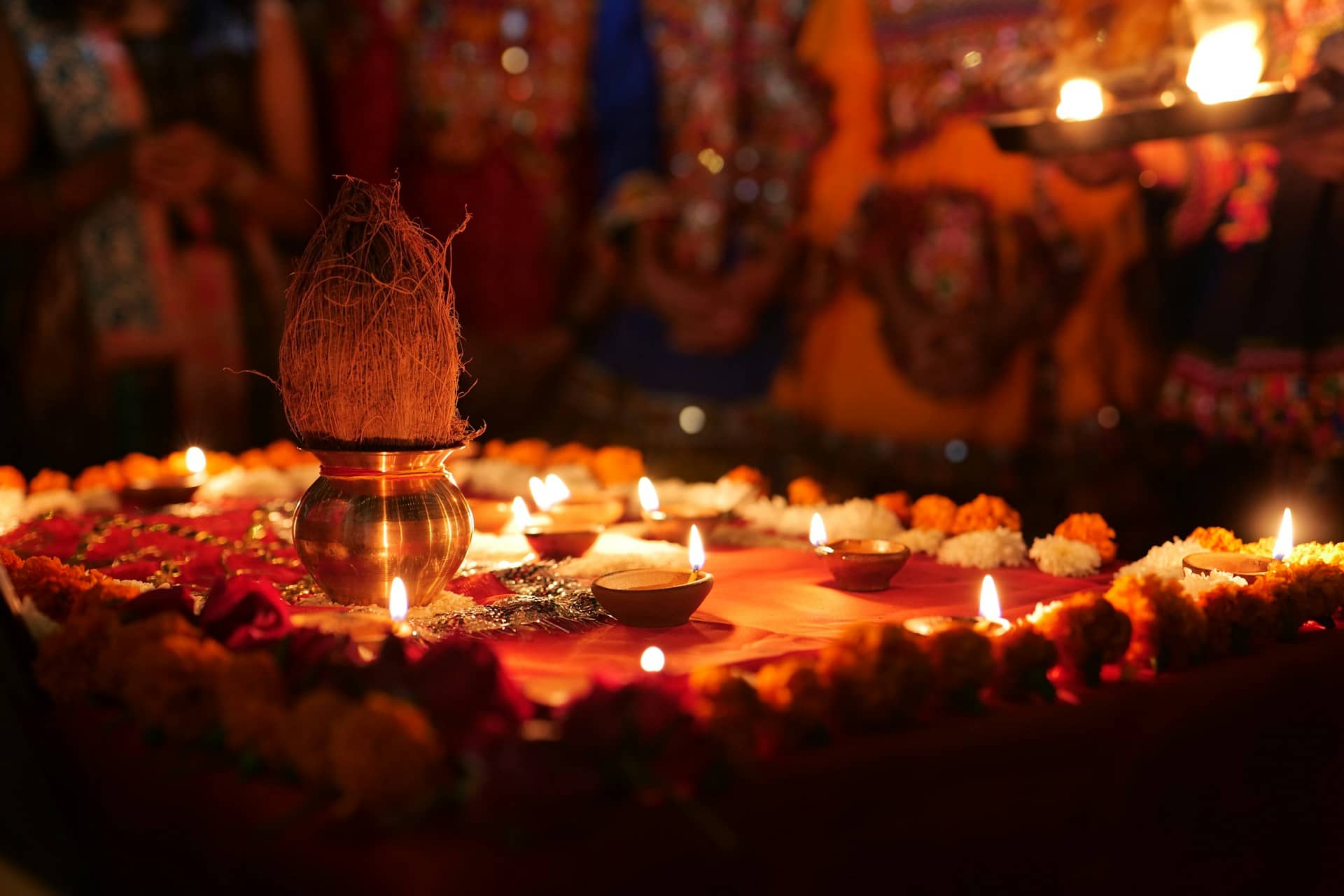
Why is Tihar called the Festival of Lights in Nepal?
Tihar is called the "Festival of Lights" in Nepal for several significant reasons, with the lighting of oil lamps, known as "diyo" or "dip," being the most prominent. The lamps symbolize the victory of light over darkness and good over evil, a theme central to the festival’s spiritual significance. Here are some additional reasons why Diwali is celebrated as the Festival of Lights:
- Worship of Goddess Laxmi: On Laxmi Puja, the third and most important day of Tihar, homes are brightly lit with oil lamps and electric lights to welcome the Hindu goddess of wealth and prosperity, Laxmi. It is believed that Laxmi visits clean, illuminated homes to bless the inhabitants with good fortune and abundance.
- Rangoli and Light Decorations: People decorate their homes and courtyards with colorful rangolis (patterns made with colored powders or flowers) and surround them with lamps, adding to the festive ambiance. The lights enhance the beauty of the intricate designs and invite positive energy.
- Symbol of Protection and Happiness: The lighting of lamps is not only a religious act but also a symbol of protection from negative forces. Bright lights are believed to ward off evil spirits, ensuring a safe and happy environment for families during the festival.
- Unity and Celebration: Tihar brings communities together in celebration, and the shared lighting of lamps throughout neighborhoods fosters a sense of unity and joy. The festival’s lights create a vibrant, collective atmosphere of warmth and celebration that transcends individual homes.
- End of Harvest Season: As Tihar falls at the end of the harvest season, the lighting of lamps represents a celebration of nature’s bounty and the abundance that has been harvested. It’s a time for families to give thanks and offer gratitude, and the lights are symbolic of hope for a prosperous year ahead.
Thus, the bright, glowing lamps during Tihar hold deep spiritual, cultural, and social meaning, making it rightfully known as the Festival of Lights in Nepal.
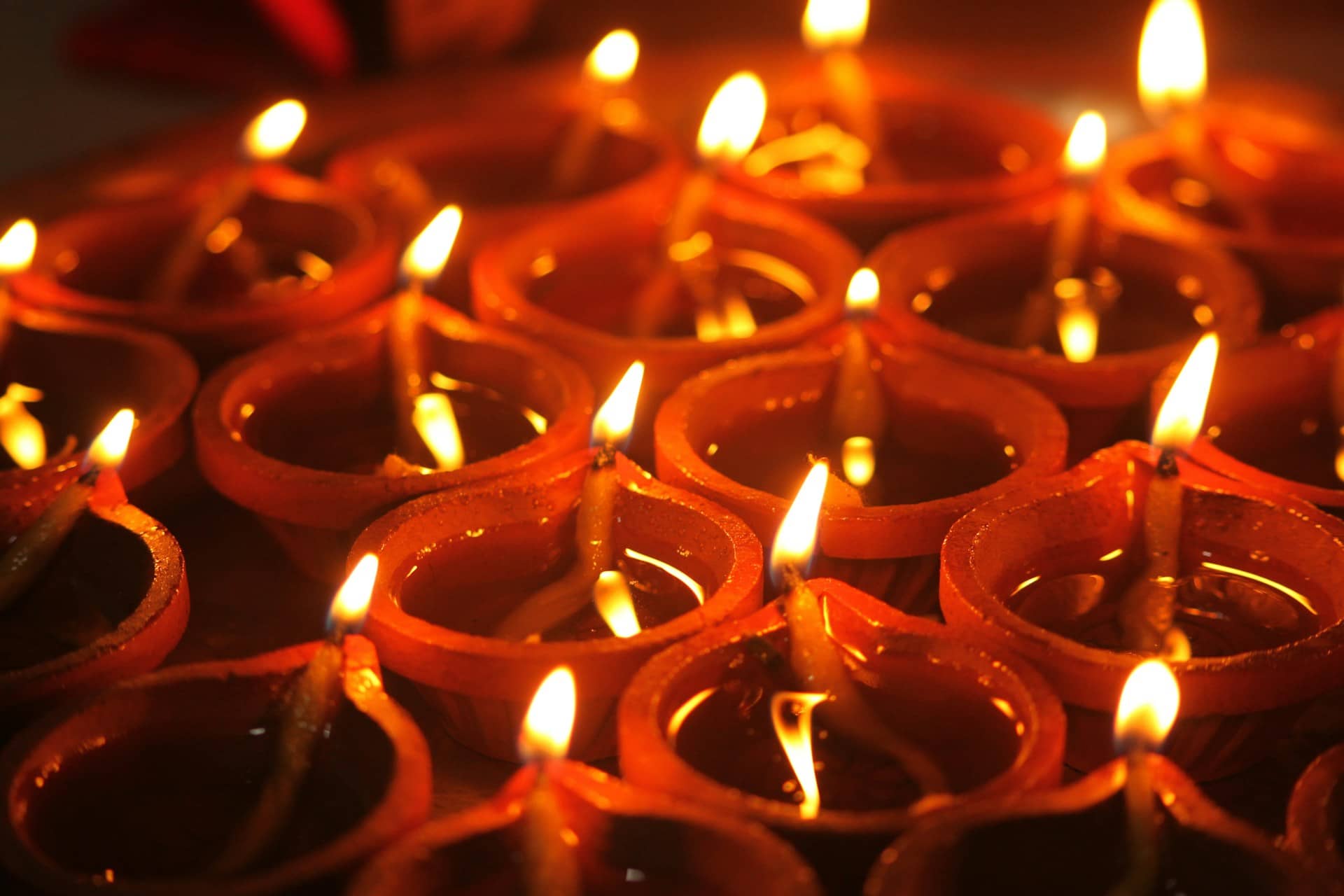
Importance of Tihar in Nepalese Culture
Tihar holds great importance in Nepali culture, embodying a rich blend of spirituality, cultural traditions, and social values. As one of Nepal’s most vibrant festivals, Tihar is significant for several reasons:
1. Celebration of Life and Nature
Tihar reflects a deep reverence for animals and nature. Each day of the festival honors different animals, such as crows, dogs, cows, and oxen, symbolizing the harmonious relationship between humans and other creatures. This connection to nature is a vital aspect of Nepali culture, where animals play important roles in daily life.
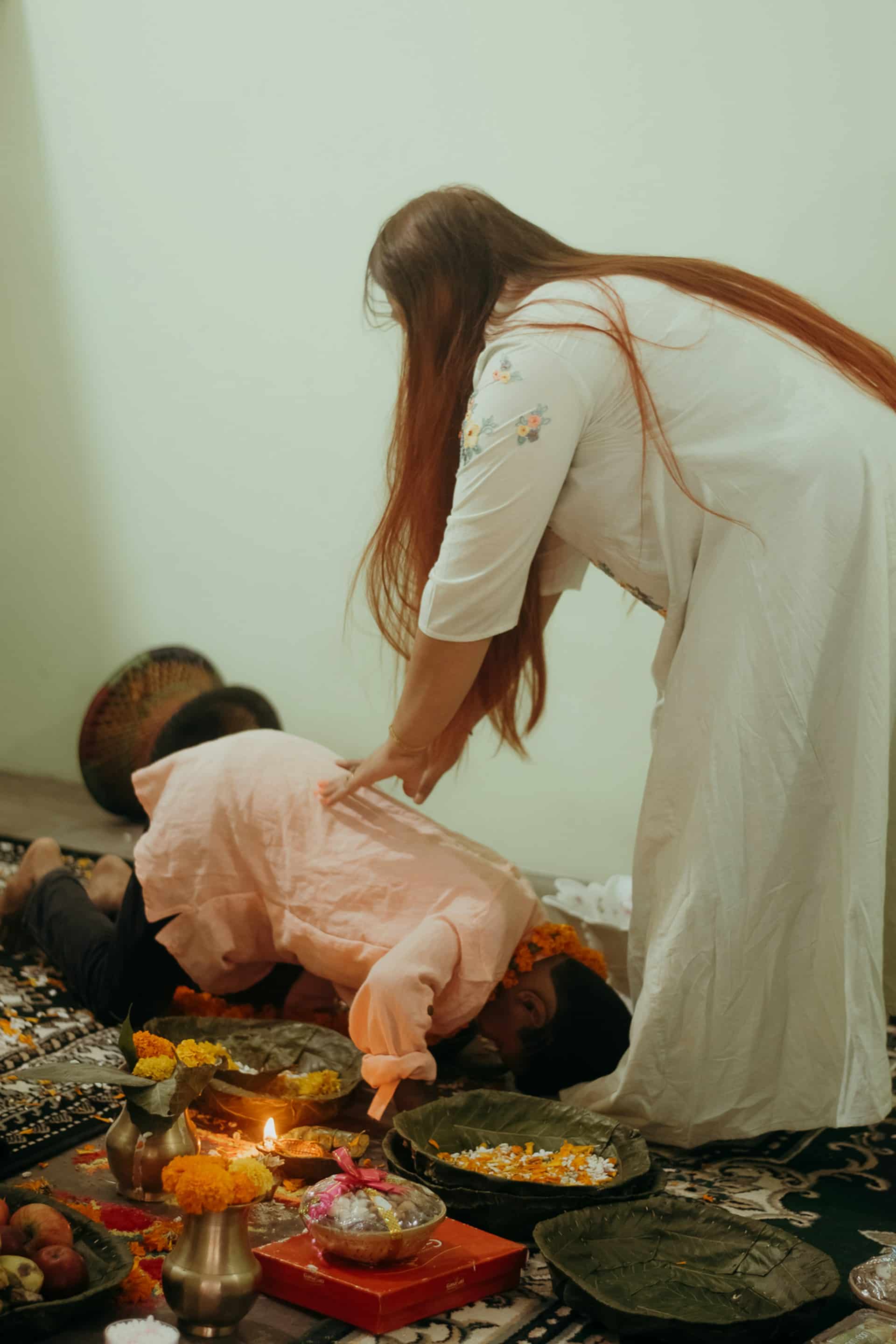
2. Spiritual Significance
At the heart of Tihar is the worship of Goddess Laxmi, the Hindu deity of wealth and prosperity. On Laxmi Puja, homes are illuminated to invite her blessings. The festival’s focus on light over darkness and good over evil aligns with Hindu spiritual beliefs and fosters a sense of spiritual renewal and hope.
3. Strengthening Family Bonds
One of the most cherished days of Tihar is Bhai Tika, a day that celebrates the bond between brothers and sisters. Sisters place a colorful tika on their brothers' foreheads, offering prayers for their longevity and well-being, while brothers give gifts in return. This day reinforces the deep family values central to Nepali society.
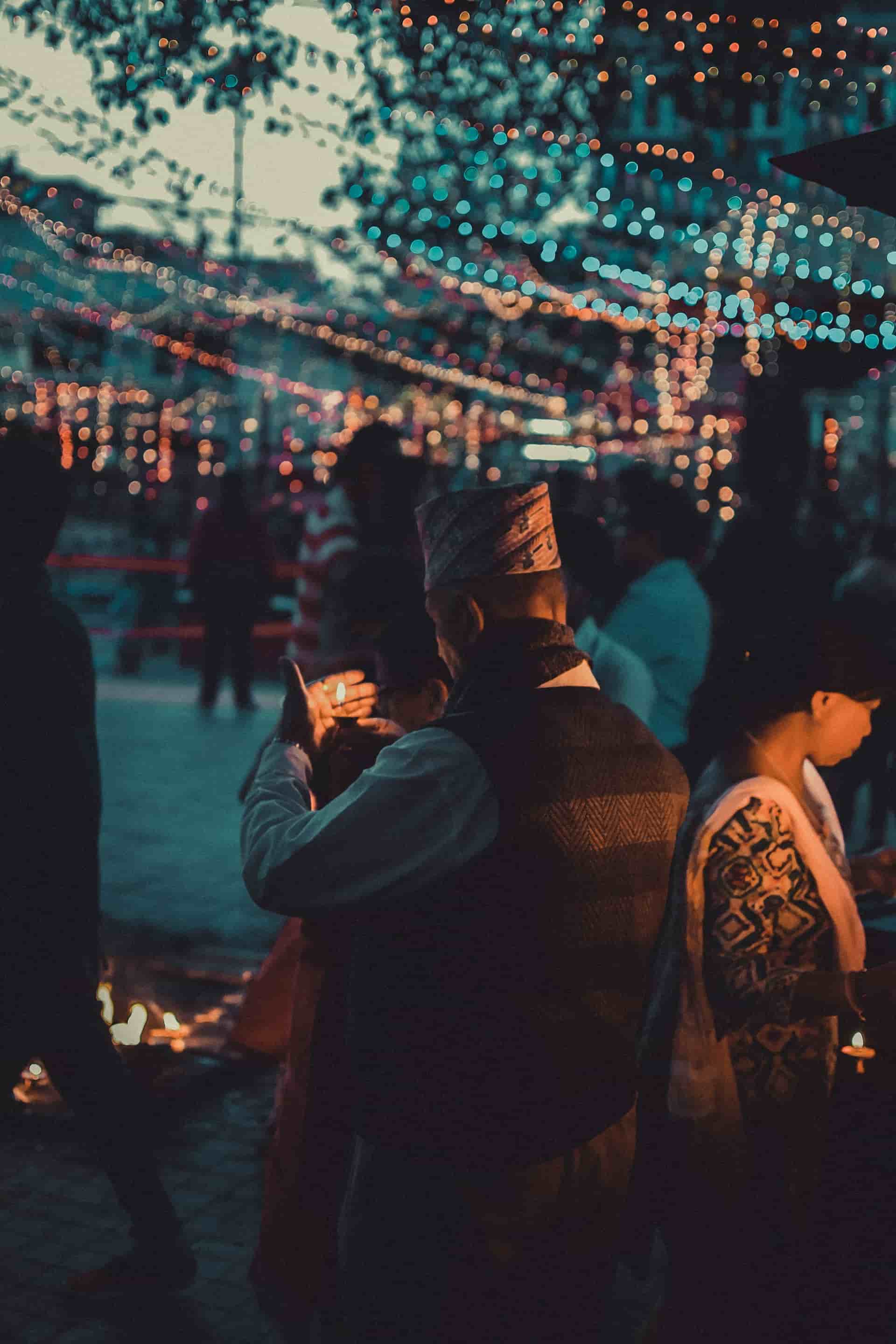
4. Cultural Heritage
Tihar showcases Nepal’s rich cultural heritage through traditional music, food, and art. The practice of making rangolis (decorative patterns made from colored powders or flowers) in homes, singing Deusi-Bhailo songs, and preparing special festive foods all reflect the diverse customs and artistic expressions of Nepali culture.
5. Community Spirit
Tihar is a time when communities come together in celebration. Homes are lit up, neighborhoods are decorated, and families gather to exchange greetings and blessings. The communal singing of Deusi-Bhailo, where groups go from house to house, enhances the sense of togetherness, spreading joy and unity across different communities.
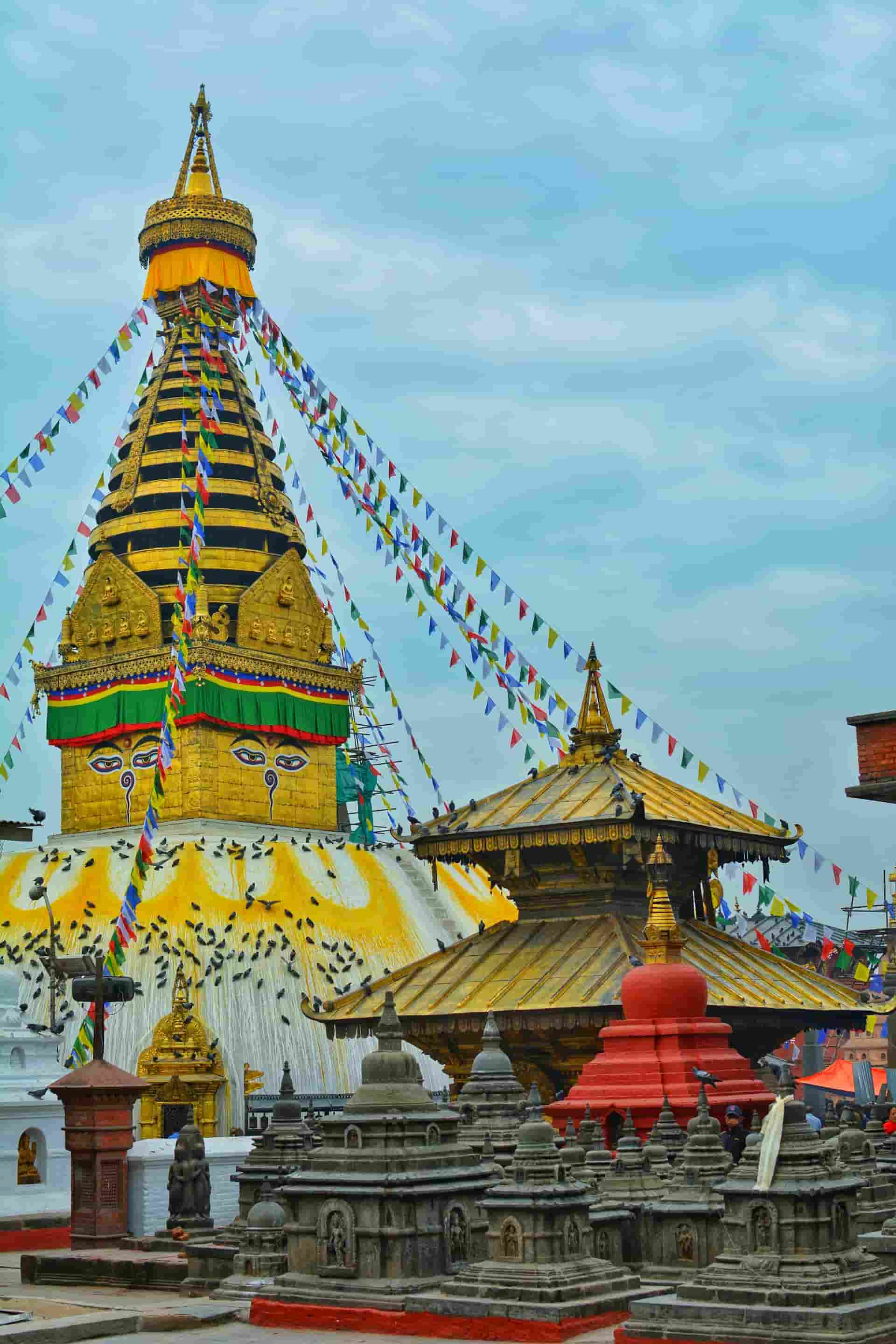
6. Cultural Identity and Continuity
Tihar preserves and promotes Nepali traditions, ensuring the continuity of cultural identity across generations. The festival provides a platform for young people to learn and participate in long-standing rituals and customs, fostering a connection to their cultural roots.
7. Tourism and Cultural Exchange
Tihar also plays a significant role in promoting tourism and cultural exchange in Nepal. The vibrant celebrations, colorful decorations, and unique rituals attract tourists from around the world, offering them an immersive experience of Nepali traditions. The festival showcases the country’s rich cultural diversity, fostering cross-cultural understanding and appreciation. Visitors witness not only the religious significance but also the warmth of Nepali hospitality, contributing to Nepal’s global cultural footprint and enhancing tourism during the festive season.
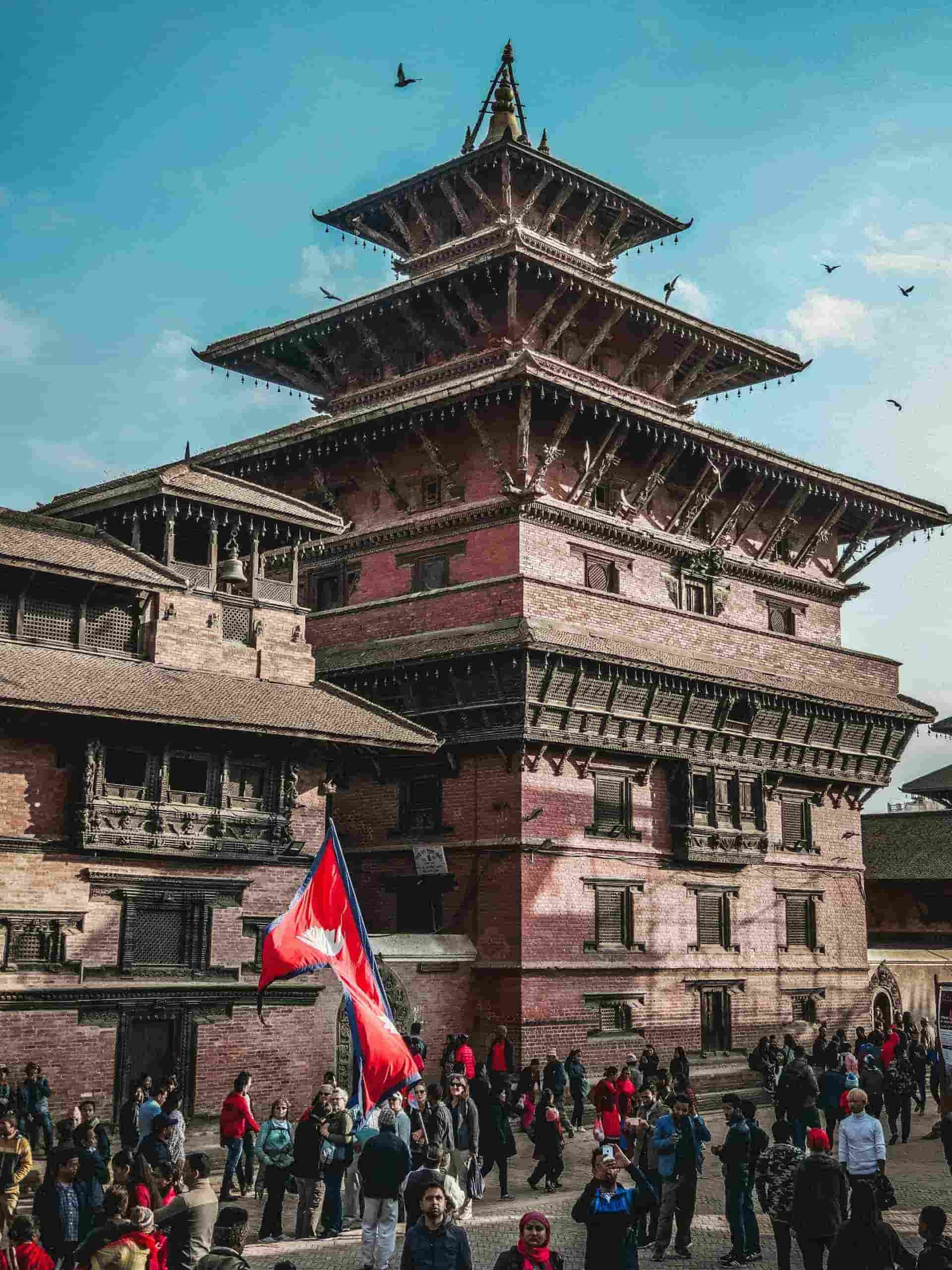
Important Days during the Tihar Festival in Nepal
Tihar, also known as the Festival of Lights, is celebrated over five days, each dedicated to honoring different animals, deities, and relationships. Here’s a breakdown of the important days during Tihar in Nepal:
1. Kaag Tihar (Day of the Crow)
- Date: First day of Tihar
- Significance: On this day, crows (Kaag) are worshipped as messengers of Yama, the god of death. People offer food to crows to ward off grief and bad news, acknowledging the crow's symbolic role as a spiritual messenger.
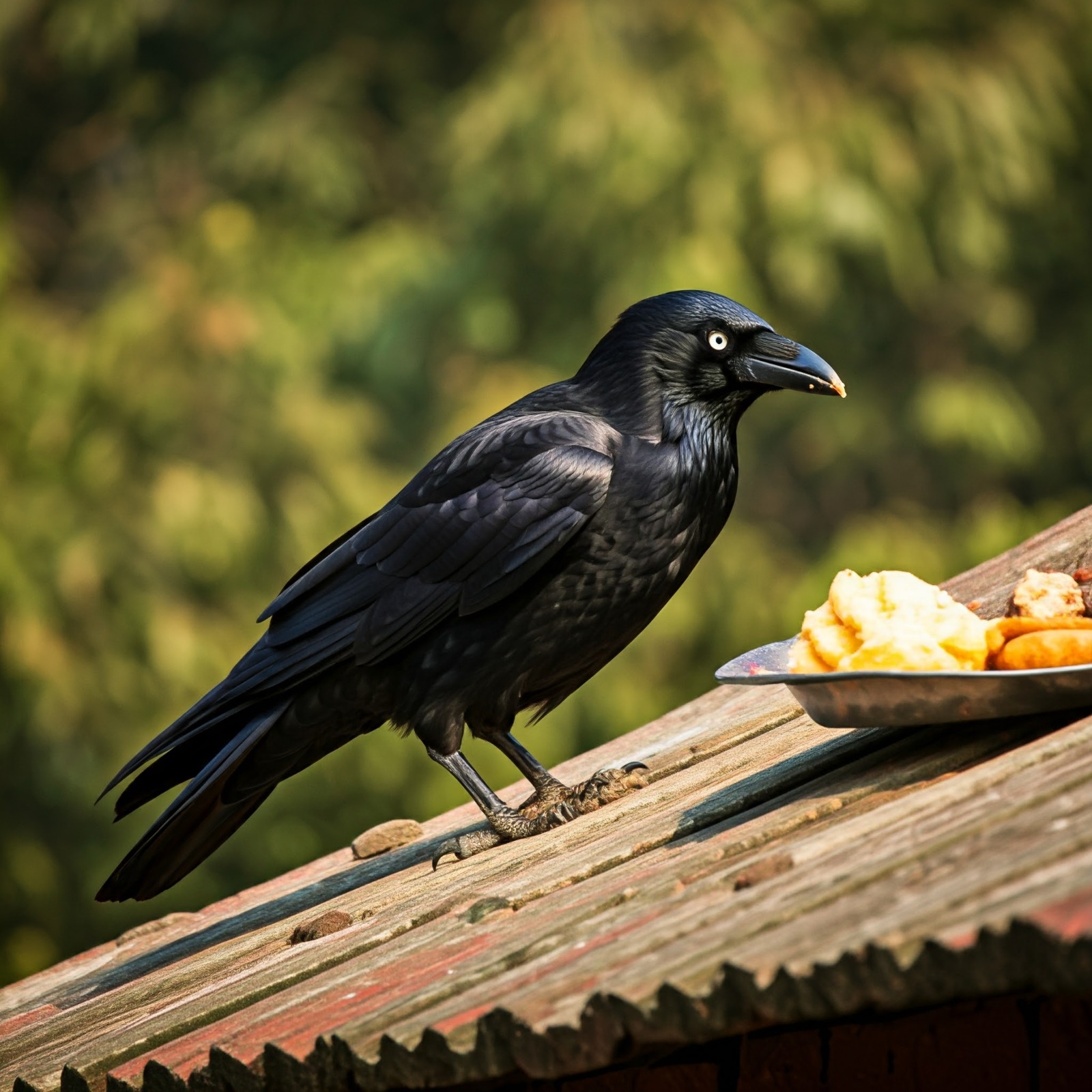
2. Kukur Tihar (Day of the Dog)
- Date: Second day of Tihar
- Significance: Dogs (Kukur) are honored for their loyalty and protection. They are considered the guardians of homes and the companions of Yama. People garland dogs with flowers, put tika on their foreheads, and offer them special treats as a sign of love and respect.
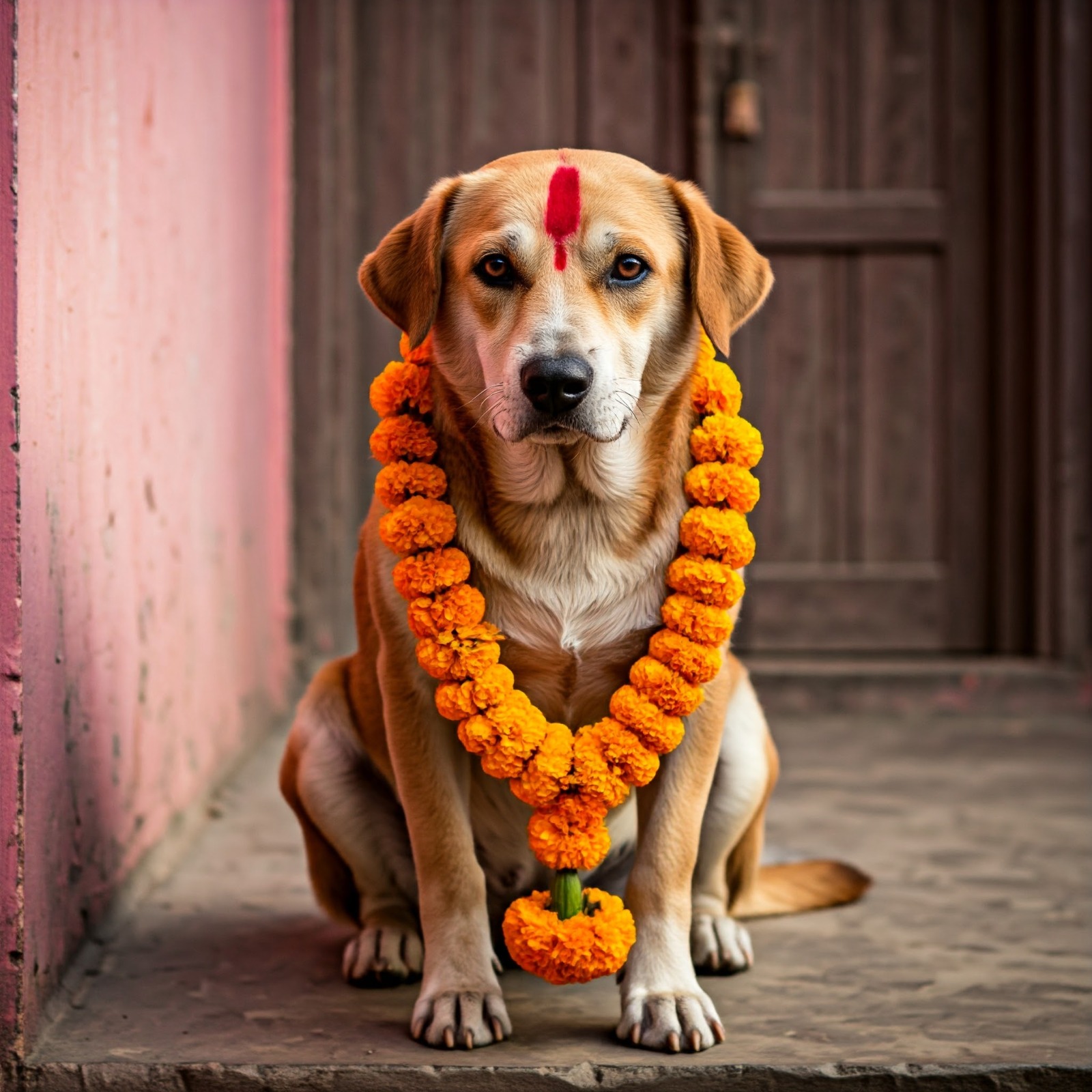
3. Gai Tihar and Laxmi Puja (Day of the Cow and Worship of Goddess Laxmi)
- Date: Third day of Tihar
- Significance: In the morning, cows (Gai) are worshipped as a symbol of prosperity and motherly nurturing. Cows are revered for their role in agriculture and household sustenance.
- In the evening, homes are cleaned and illuminated with oil lamps and candles for Laxmi Puja, the worship of Goddess Laxmi, the deity of wealth and prosperity. People pray for abundance, and it is believed that Laxmi visits clean, well-lit homes to bestow blessings.
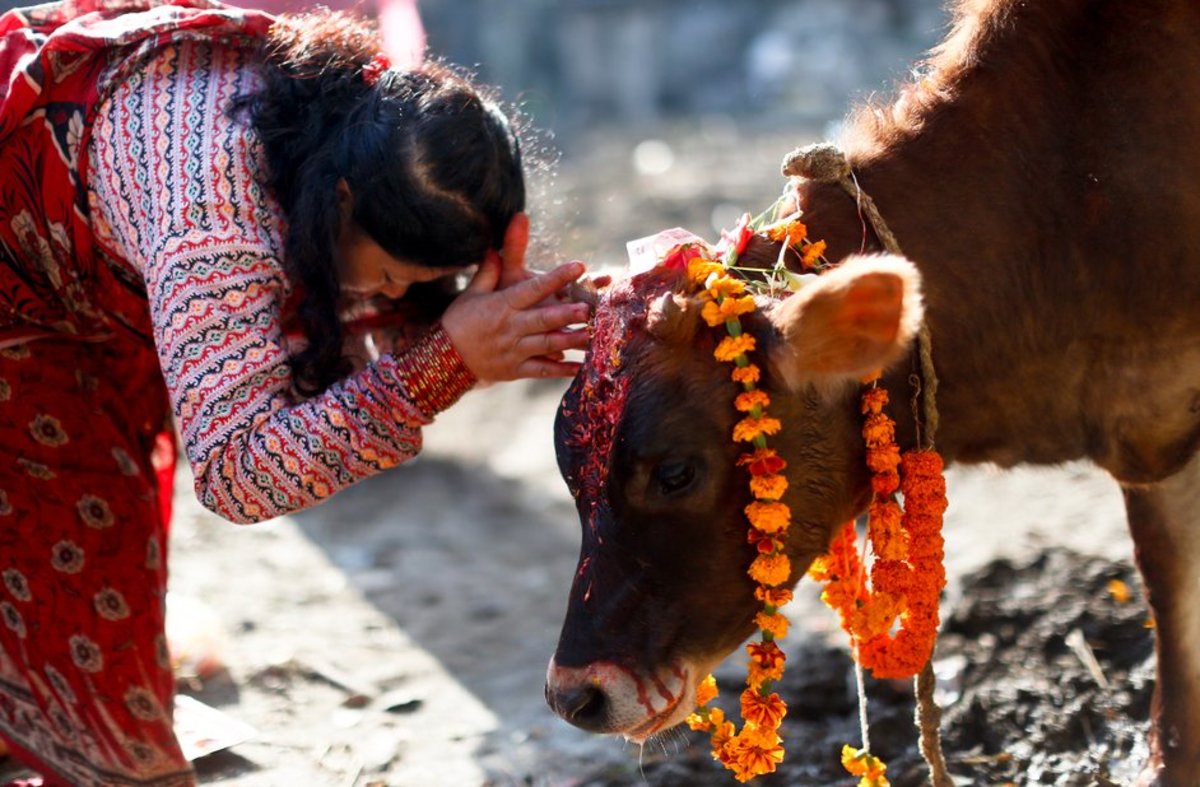
4. Govardhan Puja or Mha Puja (Day of the Ox and Self-Worship)
- Date: Fourth day of Tihar
- Significance:
- Govardhan Puja is celebrated by worshiping oxen (symbolic of agriculture), recognizing their importance in farming and livelihood. People also worship Mount Govardhan, following the Hindu myth of Krishna lifting the mountain to protect villagers.
- Mha Puja, particularly observed by the Newar community, this day celebrates the self with Mha Puja (self-worship). It is believed that by worshiping the body, people honor life itself and renew the soul.
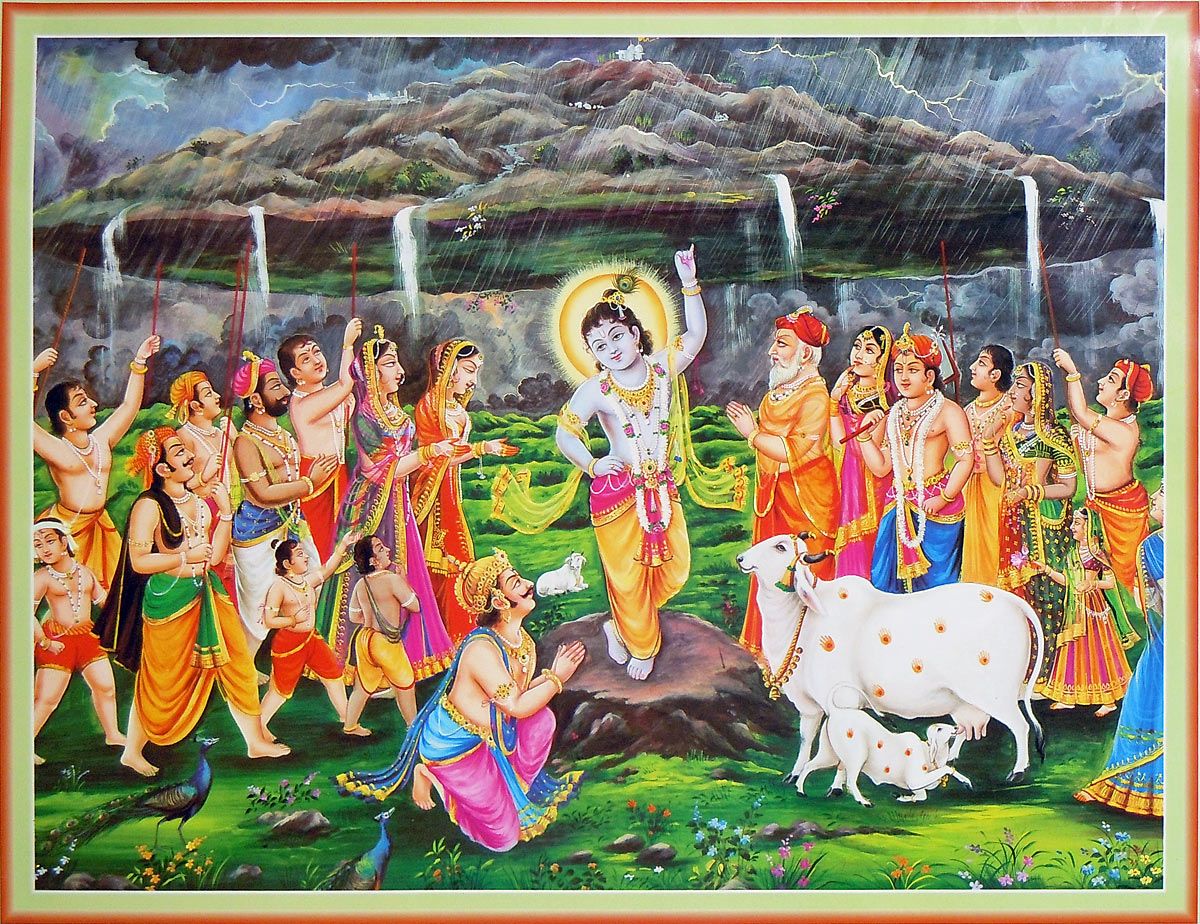
5. Bhai Tika (Day of the Brothers and Sisters)
- Date: Fifth and final day of Tihar
- Significance: Bhai Tika is perhaps the most cherished day of Tihar. Sisters place a colorful tika on their brothers’ foreheads, offering prayers for their protection, long life, and prosperity. In return, brothers give gifts and promise to protect their sisters. The ritual symbolizes the strong bond of love and protection between siblings.
Each day of Tihar has its own distinct meaning and set of rituals, reflecting the deep-rooted values of nature, relationships, and spiritual beliefs in Nepali culture. Together, these five days make Tihar a festival of unity, love, prosperity, and light.
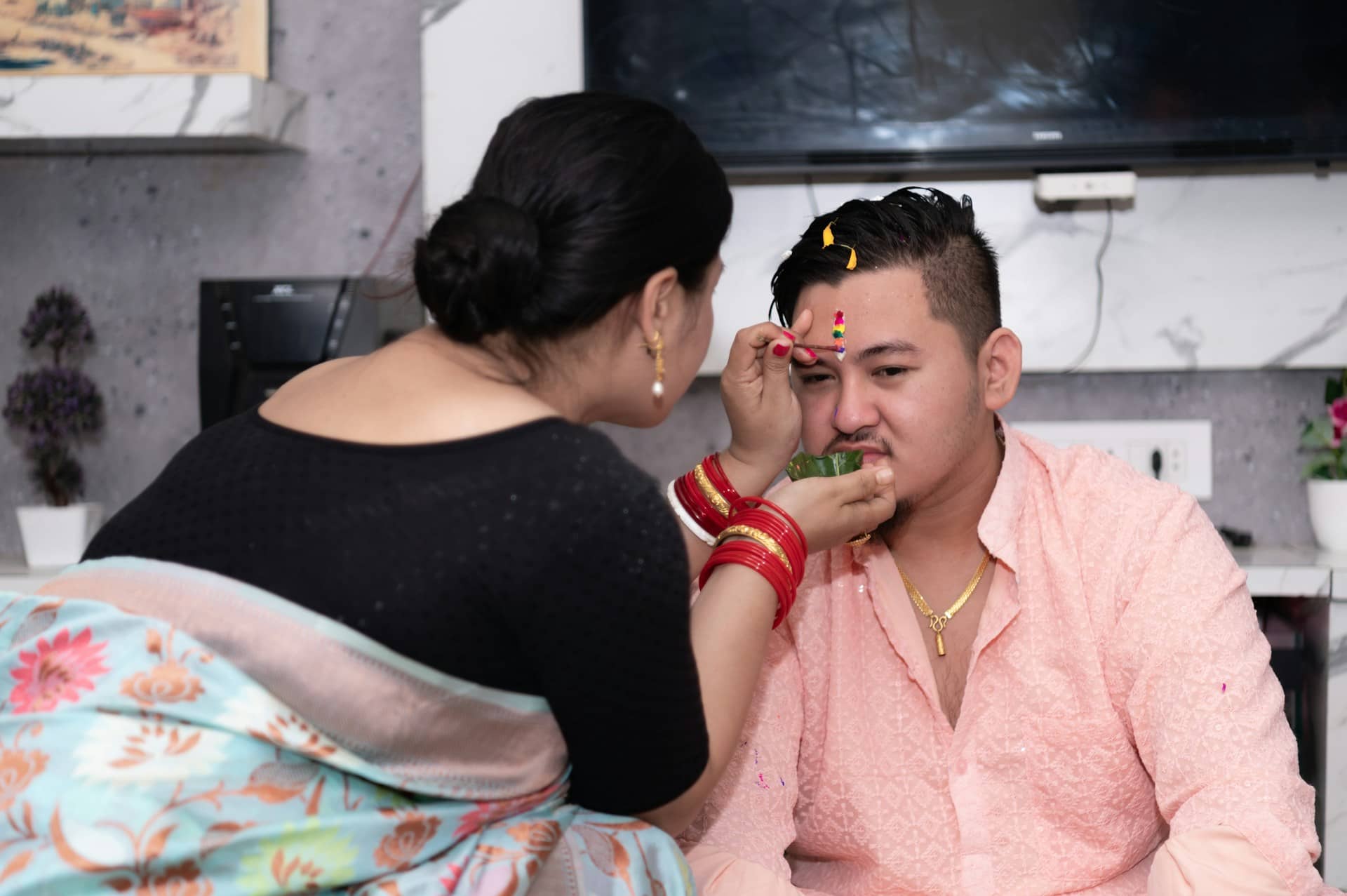
How Tihar is Celebrated in Nepal
Tihar is a celebration of light, love, and unity, where traditions, rituals, and cultural expressions come together to create a joyous and meaningful festival. Each day carries its own unique significance, and the celebration brings together families, communities, and even visitors in the spirit of togetherness and prosperity.
1. Decorating Homes
Tihar is a time when homes are cleaned, decorated, and illuminated. Families sweep and clean their homes to ensure that they are ready to receive the blessings of Goddess Laxmi, the goddess of wealth. People decorate their houses with beautiful rangoli designs, flowers, and festive lights. These decorations create a welcoming environment and symbolize purity, joy, and prosperity.
2. Lighting Oil Lamps
One of the most important traditions during Tihar is the lighting of oil lamps (diyo). Homes, streets, and temples are illuminated with countless oil lamps, candles, and electric lights. This act symbolizes the victory of light over darkness and good over evil. It is believed that the bright lights invite Goddess Laxmi to enter homes and bless the inhabitants with wealth and happiness. The glow from these lamps also creates a magical and festive atmosphere across the country.
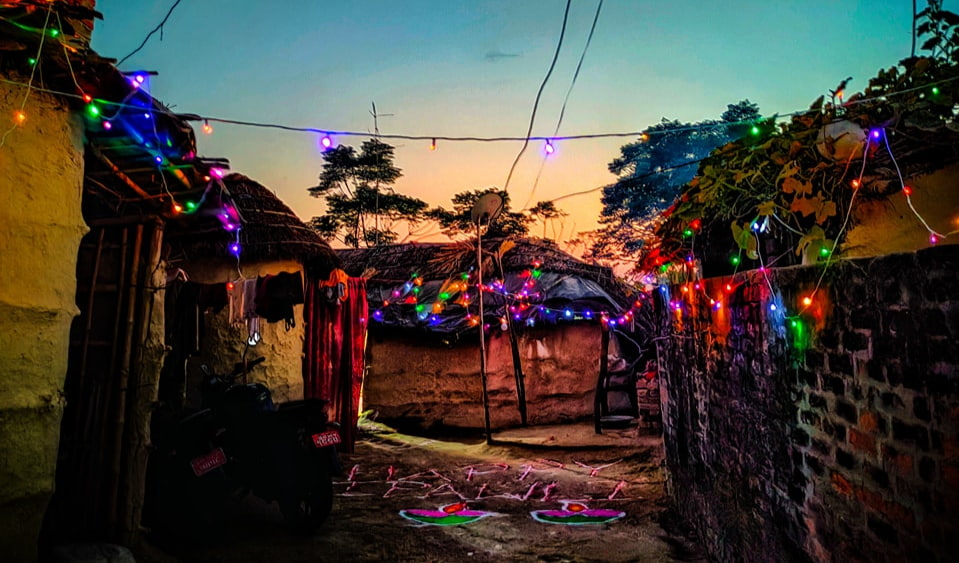
3. Making Rangoli
Rangoli, a form of decorative art, is created by making colorful patterns on the ground or in courtyards using colored powders, flowers, or rice. These designs are often intricate and beautiful, representing beauty, positivity, and welcome. Rangoli is also considered a way to attract good luck and positive energy, making it an important part of the celebrations.
4. Worshipping Animals
Tihar is unique in that it honors various animals for their roles in human life. Each day is dedicated to a specific animal, with rituals and offerings:
- Kaag Tihar (Day of the Crows): Honoring crows, considered messengers of Yama, the god of death.
- Kukur Tihar (Day of the Dogs): Celebrating dogs for their loyalty and protection.
- Gai Tihar (Day of the Cows): Worshipping cows for their nurturing and agricultural importance.
- Govardhan Puja (Day of the Oxen): Honoring oxen for their role in farming and livelihood.
On these days, animals are garlanded, given food, and treated with respect to acknowledge their importance in daily life and show gratitude.
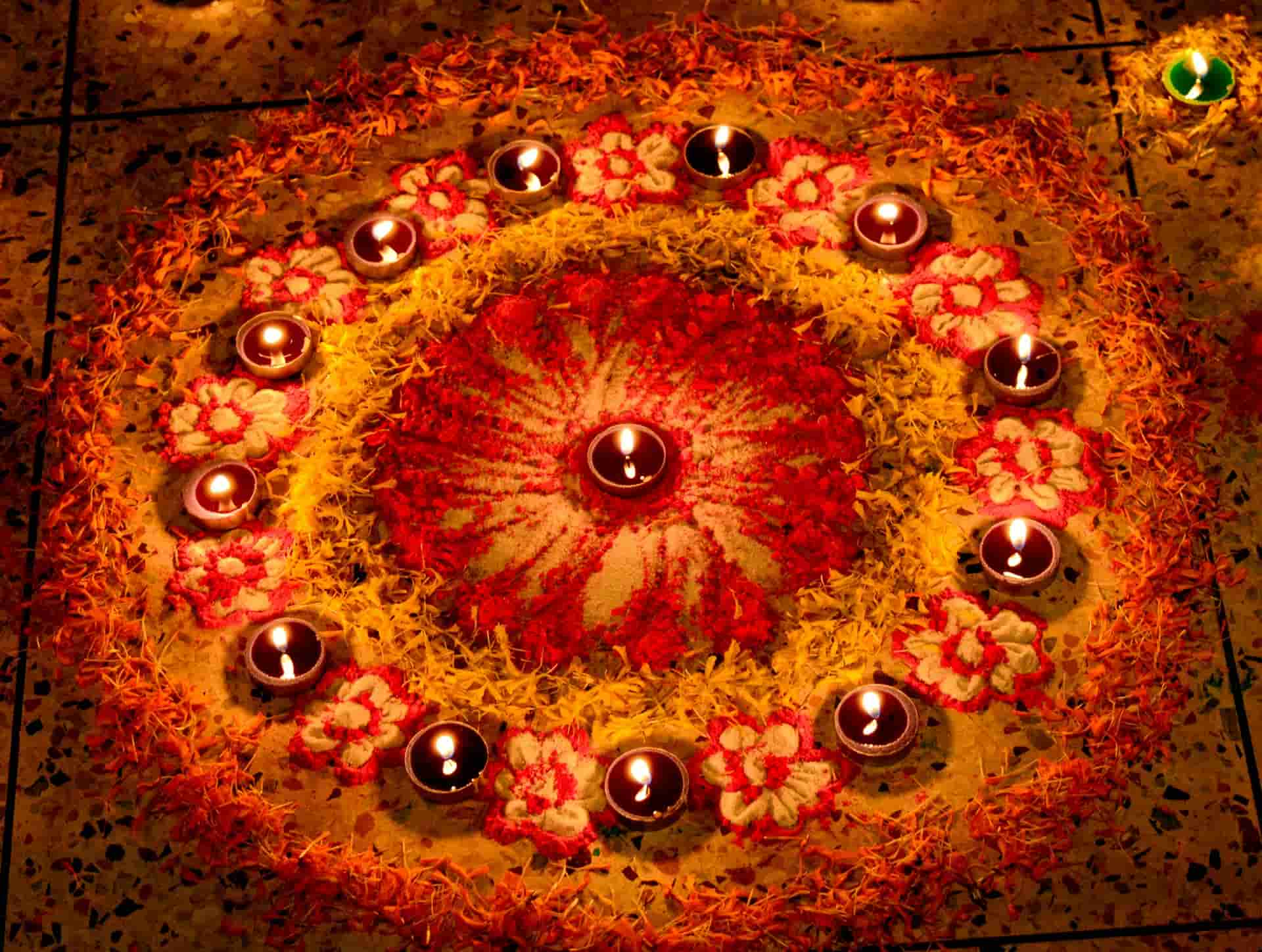
5. Applying Tika and Garland
A significant tradition during Tihar, especially on Bhai Tika, is the application of tika and garlands. Sisters apply a colorful tika (a mixture of turmeric, yogurt, and vermilion) on their brothers' foreheads as part of a special ritual. This is followed by offering garlands of marigold flowers to symbolize love, respect, and protection. In return, brothers give gifts and blessings to their sisters. This strengthens the sibling bond and celebrates family ties.
6. Deusi and Bhailo Songs
One of the most festive and community-oriented activities during Tihar is the singing of Deusi and Bhailo songs. Groups of people go from house to house, singing traditional songs and dancing to celebrate the festival. These songs, known as Deusi (sung by men) and Bhailo (sung by women), are offered to the hosts, who, in return, provide food, sweets, and money as an act of goodwill. This exchange of blessings and songs fosters a sense of community, joy, and unity.
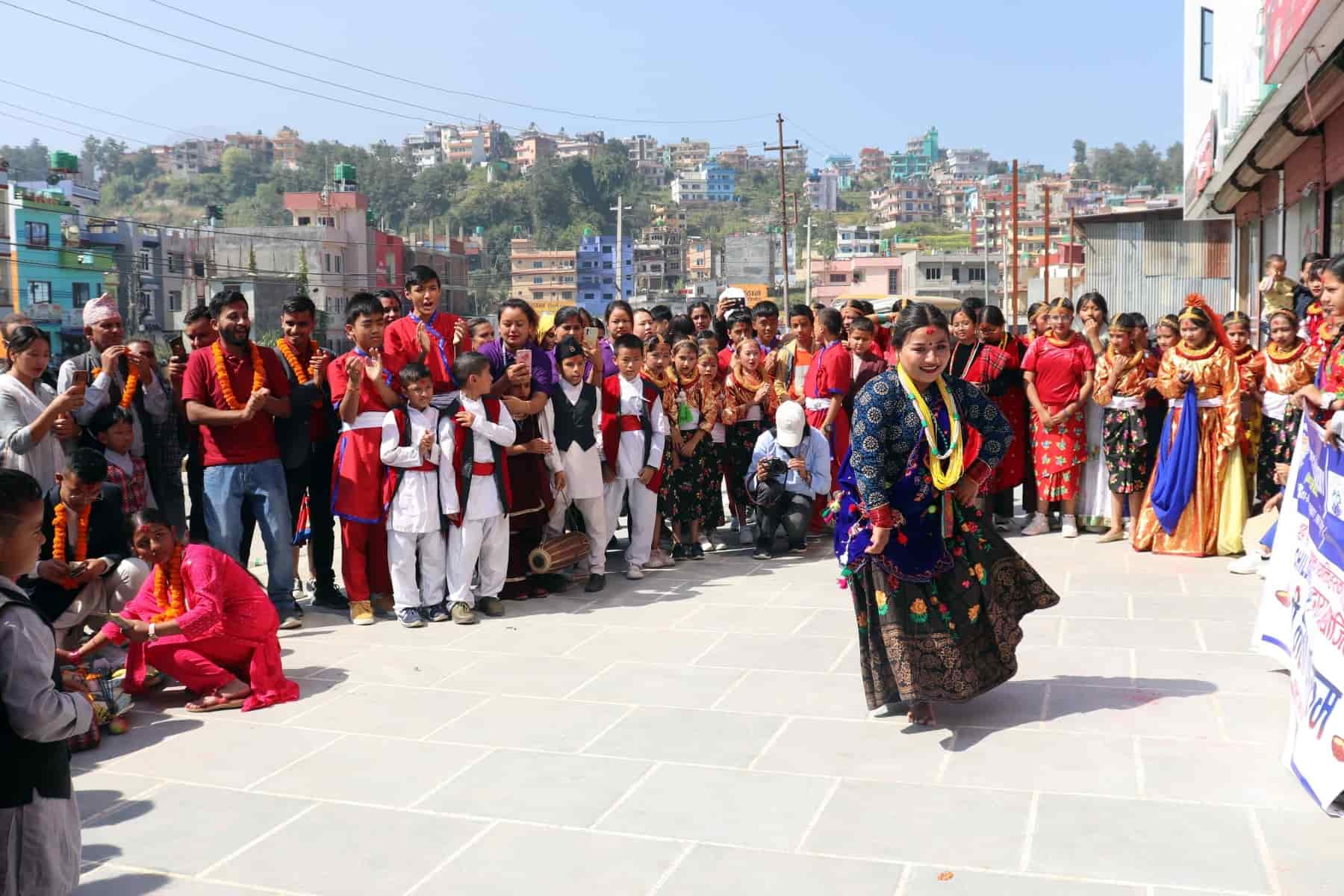
7. Exchanging Gifts
The day of Bhai Tika is especially dedicated to the exchange of gifts between brothers and sisters. Sisters pray for their brothers' health, prosperity, and long life, while brothers give gifts as a token of appreciation. This exchange of blessings and gifts strengthens the familial bond and is a significant part of the celebrations.
8. Preparing Special Foods
Food plays an important role during Tihar. Traditional Nepali delicacies like sel roti (a ring-shaped rice doughnut), barfi (a sweet dessert), laddu, and various types of meat dishes are prepared and shared with family and neighbors. The special foods add to the festive atmosphere and are often enjoyed in large family gatherings. These foods are not only delicious but also represent the abundance and prosperity associated with the festival.
Conclusion: Celebrate the Spirit of Tihar in Nepal
Tihar is more than just a festival; it's an experience that immerses you in the vibrant culture and spiritual heart of Nepal. Whether you're witnessing the glowing lights, participating in the animal worship rituals, or sharing in the festive joy with locals, Tihar offers an unforgettable cultural journey. The five days of celebration are a perfect way to explore the deep-rooted traditions and rich heritage that define Nepalese culture.
If you're seeking a unique way to experience Tihar and discover the true essence of Nepal, consider joining a cultural tour in Nepal. Explore the timeless traditions, local customs, and breathtaking landscapes while participating in the festival’s rituals.
Ready for a journey of a lifetime? Book your cultural tour in Nepal today and immerse yourself in the magic of Tihar!
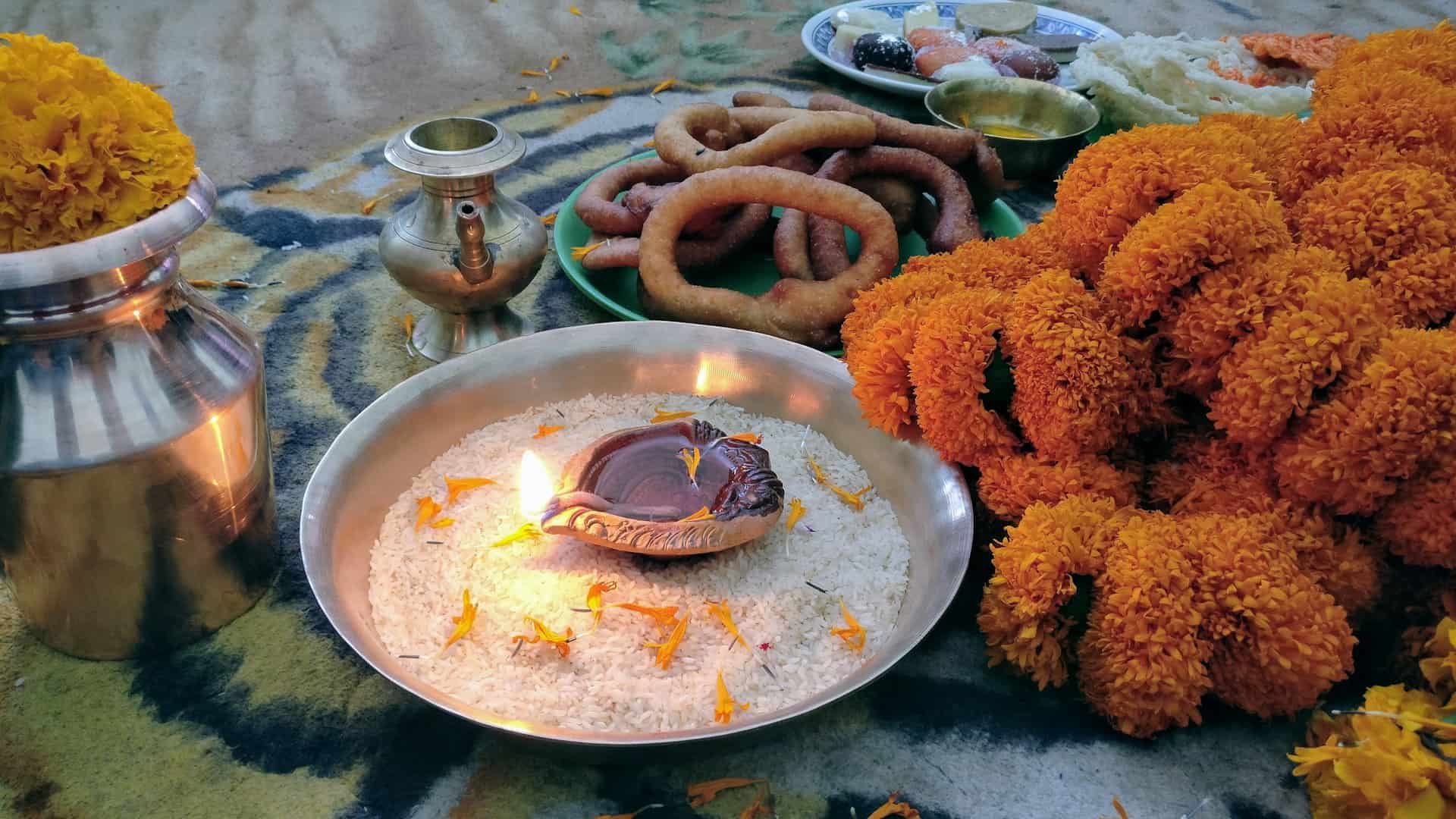
FAQ: Tihar Festival in Nepal
1. What is the Tihar Festival?
Tihar, also known as Deepawali or Yamapanchak, is a five-day Hindu festival celebrated in Nepal. It is often referred to as the Festival of Lights and is dedicated to honoring animals, deities, and the bond between brothers and sisters. The festival includes the lighting of oil lamps, decorations, worship, and community celebrations.
2. When is Tihar celebrated?
Tihar typically falls in October or November, depending on the lunar Bikram Sambat calendar. In 2024, Tihar will start on October 30 (Kartik 14, 2081 B.S.) and end on November 03 (Kartik 18, 2081 B.S.).
3. Why is Tihar called the Festival of Lights?
Tihar is called the Festival of Lights because during the festival, people illuminate their homes and streets with oil lamps, candles, and lights. This symbolizes the victory of light over darkness, good over evil, and knowledge over ignorance. It is also believed that the lights invite Goddess Laxmi, the goddess of wealth and prosperity, to bless homes.
4. What are the key traditions of Tihar?
Key traditions of Tihar include
- Lighting oil lamps (diyo) to invite prosperity.
- Worshipping animals such as dogs, cows, crows, and oxen.
- Applying tika and garlands on siblings during Bhai Tika.
- Singing Deusi and Bhailo songs and exchanging gifts.
- Making rangoli designs at doorways to attract positive energy.
5. What animals are honored during Tihar?
During Tihar, different animals are honored on specific days:
- Kaag Tihar (Day of Crows) honors crows, believed to be messengers of Yama, the god of death.
- Kukur Tihar (Day of Dogs) celebrates dogs for their loyalty and protection.
- Gai Tihar (Day of Cows) honors cows for their nurturing and agricultural significance.
- Govardhan Puja (Day of Oxen) celebrates oxen for their role in farming.
6. How is Tihar different from Diwali?
While Tihar and Diwali are similar in many ways (both involve lighting lamps and celebrating wealth), Tihar has more emphasis on animal worship and sibling relationships. Tihar also spans five days, while Diwali is typically a single-day celebration in India.
7. What are some traditional foods eaten during Tihar?
Traditional foods prepared during Tihar include:
- Sel roti (a ring-shaped rice doughnut).
- Barfi (a sweet dessert).
- Laddu (sweet round balls made from flour and sugar).
- Meat dishes and a variety of seasonal sweets and snacks are shared with family and neighbors.
8. What is Bhai Tika?
Bhai Tika is the final day of Tihar, dedicated to celebrating the bond between brothers and sisters. Sisters apply tika (a mixture of turmeric, yogurt, and vermilion) on their brothers' foreheads and offer garlands of flowers. In return, brothers give gifts and blessings to their sisters, symbolizing love and protection.
9. Is Tihar celebrated only in Nepal?
While Tihar is most prominently celebrated in Nepal, it is also observed in parts of India, particularly in areas with a large Nepali or Hindu population. In India, it is often referred to as Deepawali or Diwali.
10. What are some popular destinations in Nepal during Tihar?
Some popular travel destinations in Nepal during Tihar include:
- Kathmandu Valley, where you can experience the festive atmosphere in the heart of Nepal's cultural heritage.
- Ghorepani and Poon Hill for a blend of trekking and cultural immersion.
- Annapurna Base Camp and Mardi Himal Base Camp for trekking and enjoying Tihar's festive spirit in the mountains.
- Everest Base Camp for breathtaking views and a unique cultural experience during Tihar.
Recent Blog Posts
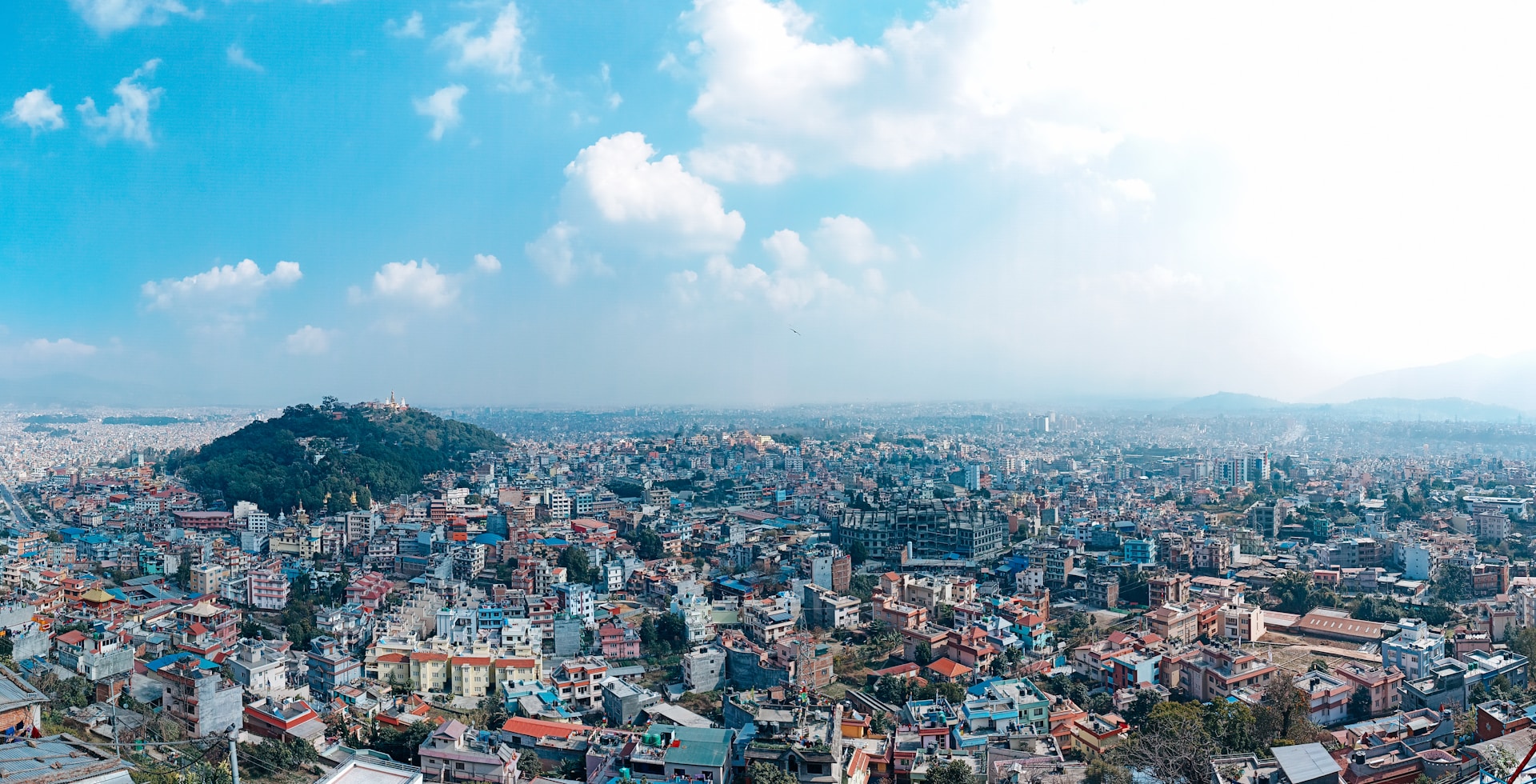
Kathmandu Valley: Exploring the Capital of Nepal
Jun 15, 2025
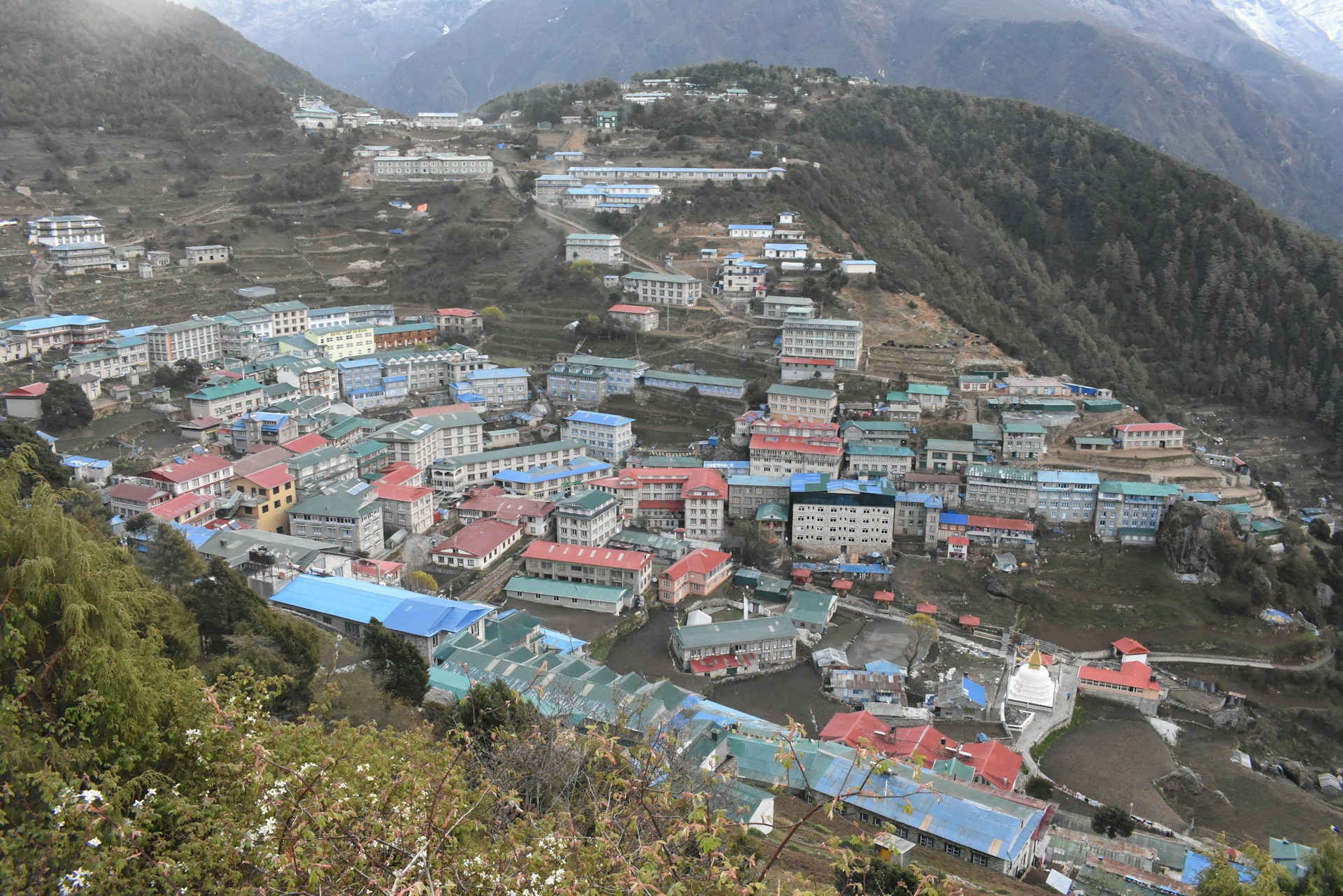
Namche Bazaar: What to Expect in the Sherpa Capital
May 20, 2025
